All the delays of Astrazeneca, Pfizer and not only on vaccines in Italy. Gimbe Report
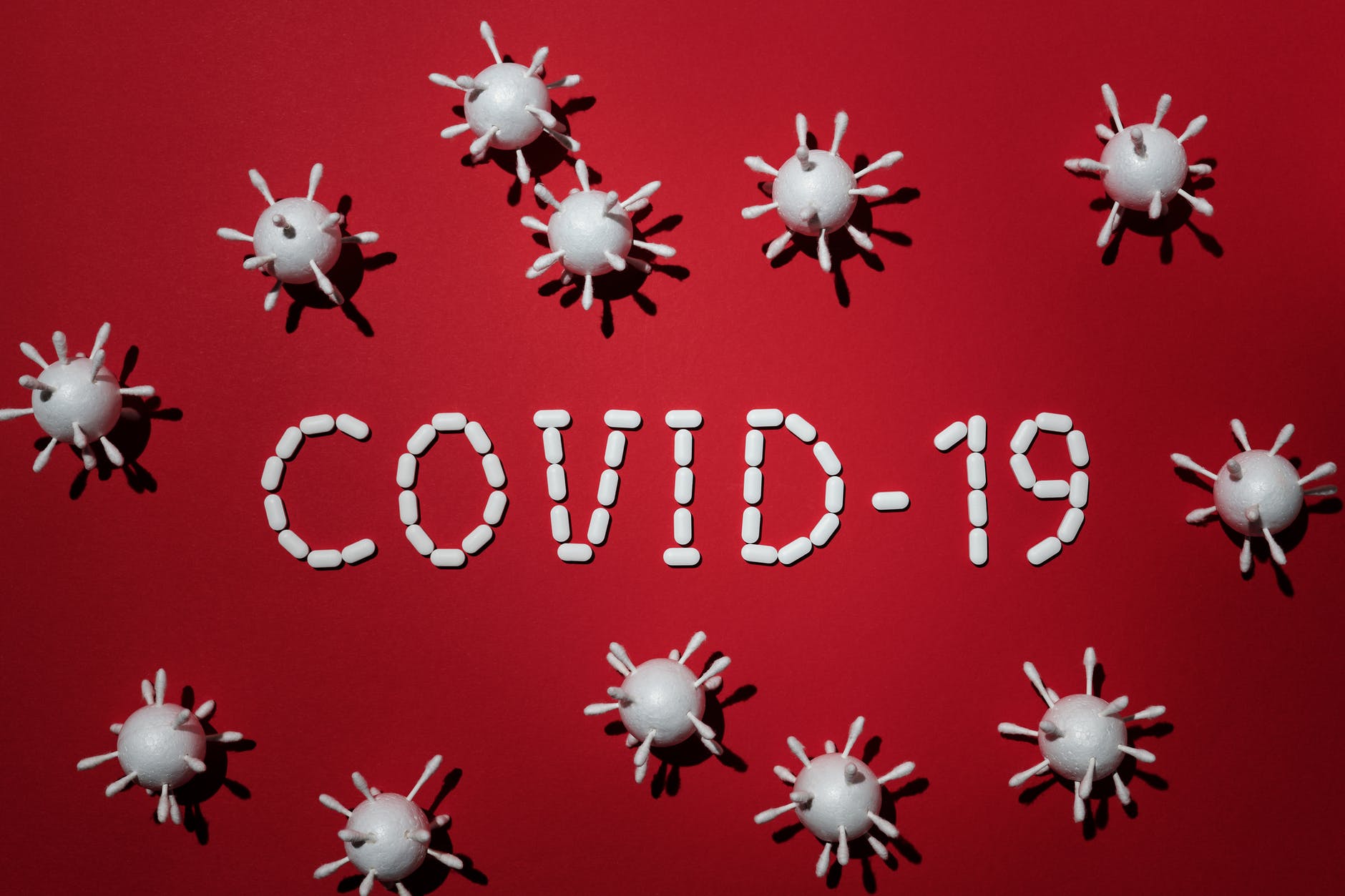
What emerges from the weekly report of the Gimbe Foundation on the progress of the pandemic and the vaccination campaign in Italy.
As of May 5, 24,779,590 doses were delivered, 32.5% of those scheduled for the first half of 2021; 25.5% of the population received at least one dose of vaccine (n. 15,200,724) and 10.9% completed the vaccination cycle (n. 6,522,822), with modest regional differences.
This is what emerges from the most updated report of the Gimbe Foundation on the progress of the pandemic and the vaccination campaign in Italy.
"On the delivery front – explains Nino Cartabellotta, president of the Gimbe Foundation – the decisive increase in the last week is very encouraging: almost 5 million doses, a decisive accelerator stroke to guarantee 3.5 million doses per week".
What about vaccination coverage? Over half of the over 60s received at least the first dose of the vaccine, with the autonomous provinces of Trento and Bolzano approaching 70%. If, however, in the over 80 and 70-79 age groups the percentage of vaccinated with at least one dose is now high, the 60-69 age group, which “weighs” heavily on hospital admissions, still lags behind.
Below is the full report.
+++
The independent monitoring of the Gimbe Foundation detects in the week 28 April-4 May 2021, compared to the previous one, a decrease in new cases (78,309 vs 90,449) (figure 1) and deaths (1,826 vs 2,279) (figure 2). Currently positive cases are also decreasing (413,889 vs 448,149), people in home isolation (393,290 vs 425,089), hospitalizations with symptoms (18,176 vs 20,312) and intensive care (2,423 vs 2,748) (figure 3). In detail, compared to the previous week, the following changes were recorded:
- Deaths: 1,826 (-19.9%)
- Intensive care: -325 (-11.8%)
- Hospitalized with symptoms: -2.136 (-10.5%)
- Home isolation: -31,799 (-7.5%)
- New cases: 78,309 (-13.4%)
- Currently positive cases: -34,260 (-7.6%)
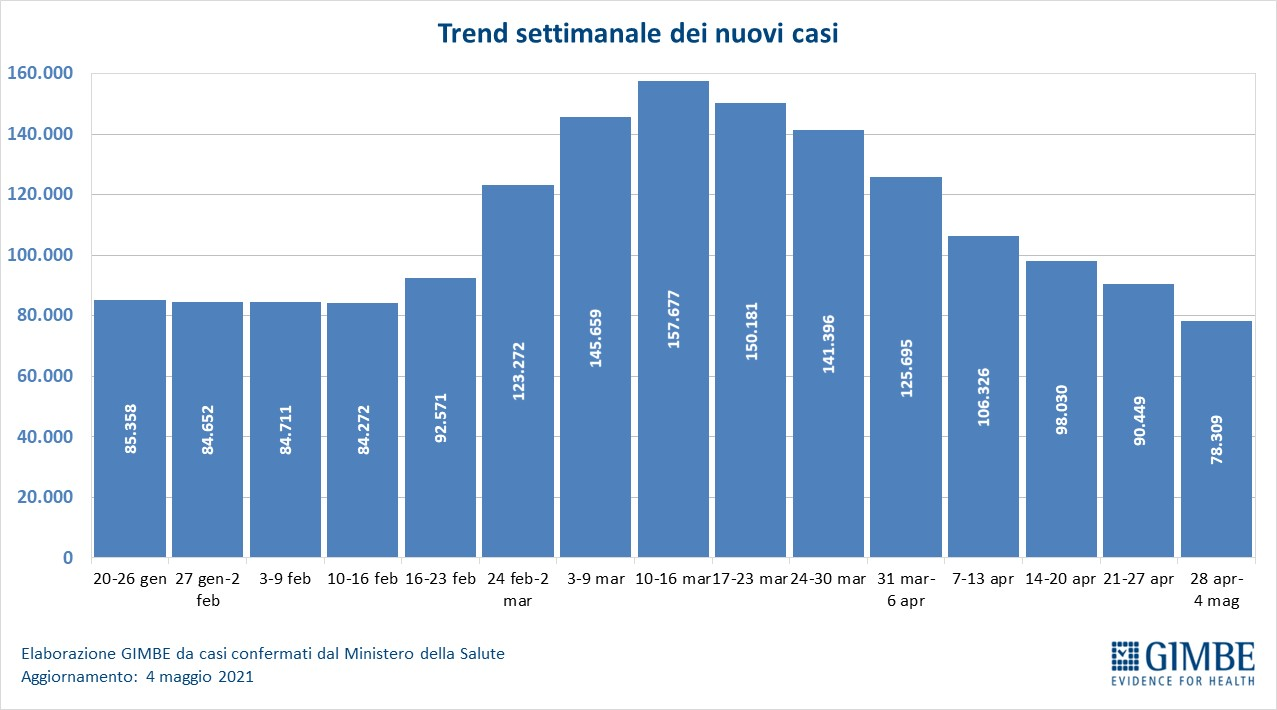
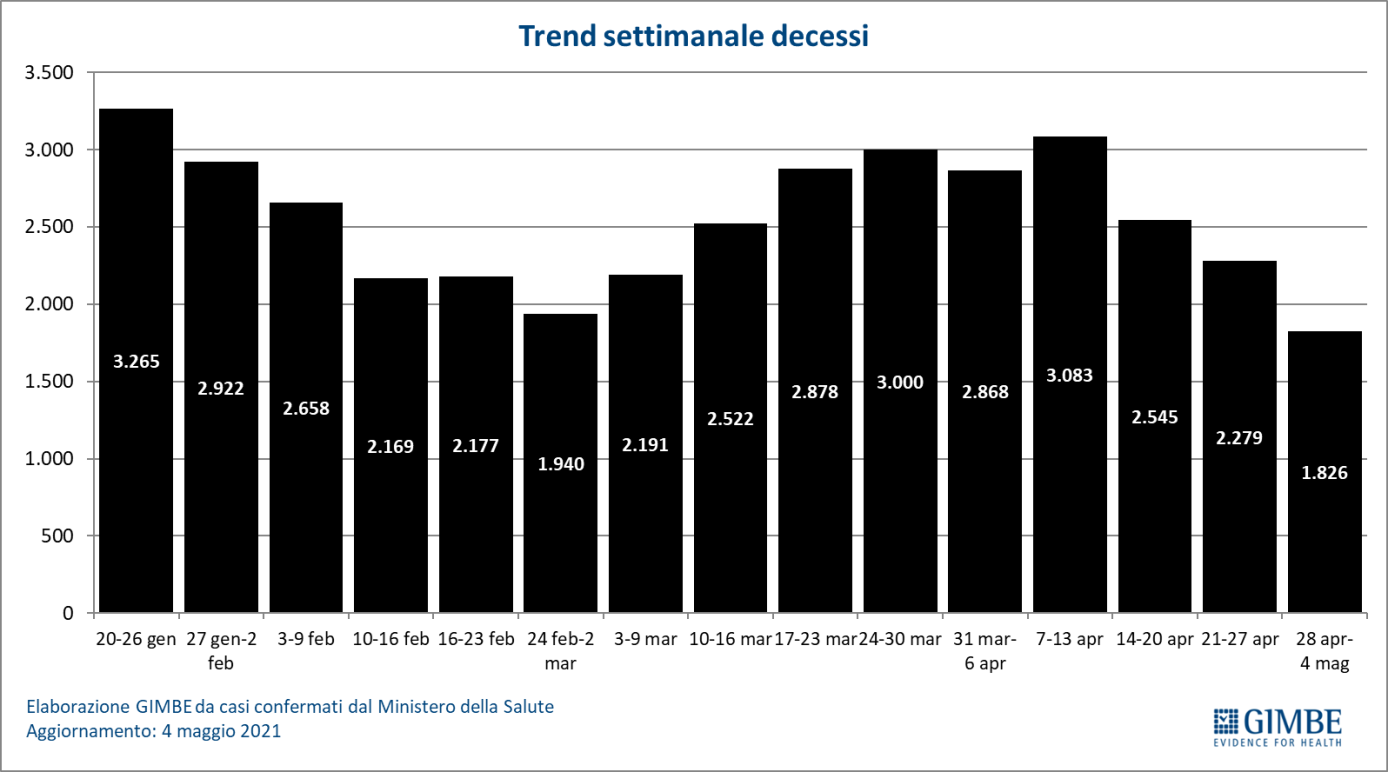
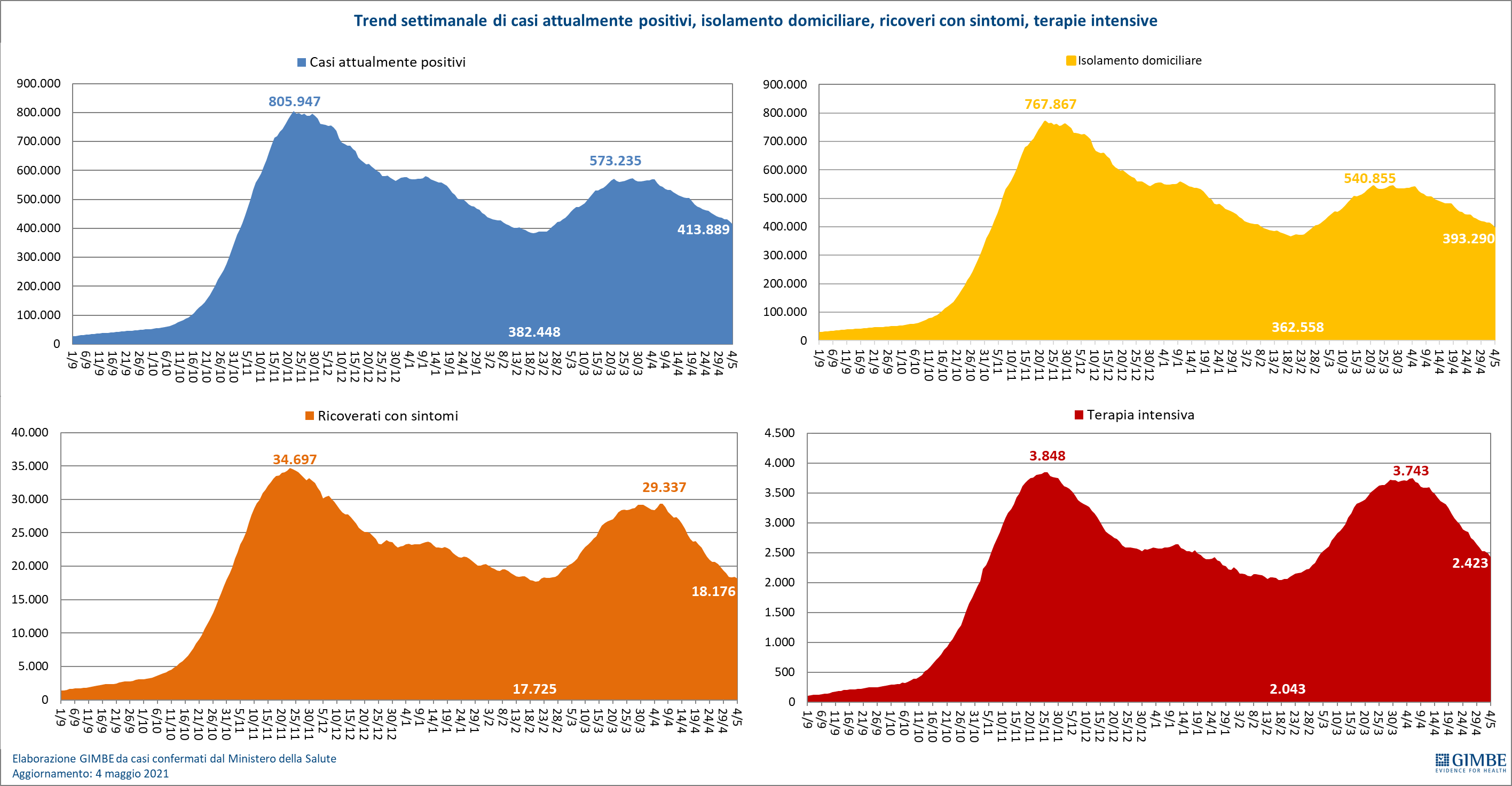
"The slow descent of the new weekly cases continues – declares Nino Cartabellotta, President of the Gimbe Foundation – even if there are early signs of increased circulation of the virus". First of all, the slight increase in the average Rt calculated by the Istituto Superiore di Sanità (ISS) on symptomatic cases which in the period 7-20 April is 0.85 (range 0.80-0.91) compared to 0.81 ( range 0.77-0.89) for the period March 31-April 13; secondly, as noted by the latest ISS bulletin, from the first half of April the rise of new cases in the 3-5 and 6-10 age brackets, a likely consequence of the resumption of school activities in the presence.
Regional differences are minimal this week: increase in the percentage variation of new cases in 1 Region and of currently positive cases in 2 Regions (table).
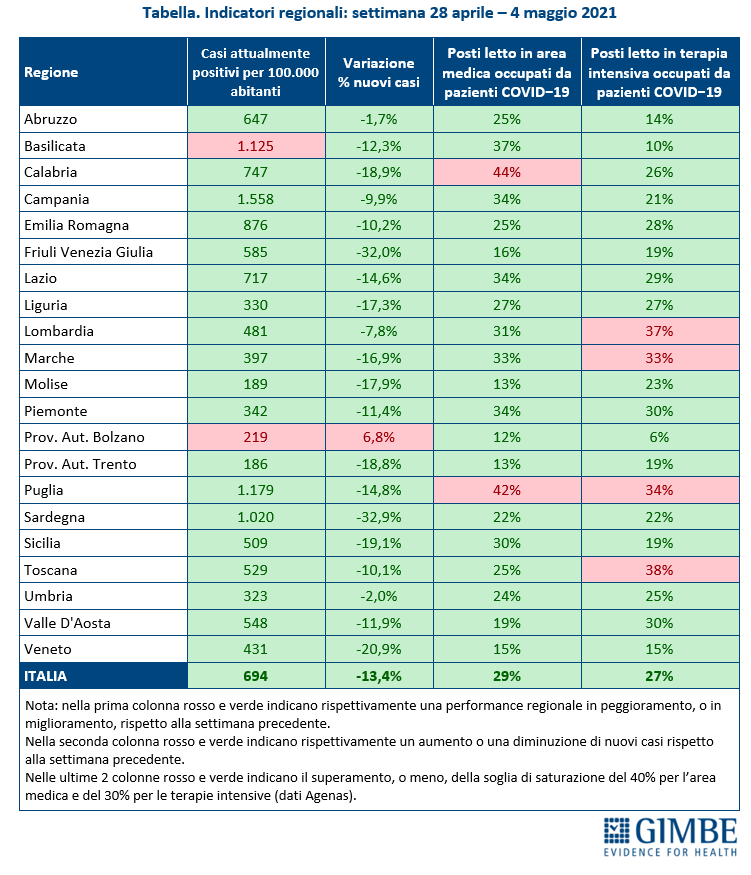
"With the gradual decline in new cases – says Renata Gili, Head of Research on Health Services of the Gimbe Foundation – the pressure on hospitals continues to decrease, where the curves of beds occupied in the medical and intensive care area have continued to drop for 4 consecutive weeks. ". In detail:
- Medical area: the curve peaked on April 6 (No. 29,337), with a 38% drop in 29 days. The occupation of beds by Covid patients remains above the 40% threshold in 2 Regions (table).
- Intensive care: the curve peaked on April 6 (No. 3,743), with a 35.3% drop in 29 days; the 30% saturation threshold is still exceeded in 4 Regions (table). "The number of new daily admissions to intensive care is also progressively decreasing – explains Marco Mosti, Operations Director of the Gimbe Foundation – with a 7-day moving average of 135 admissions / day" (figure 4).
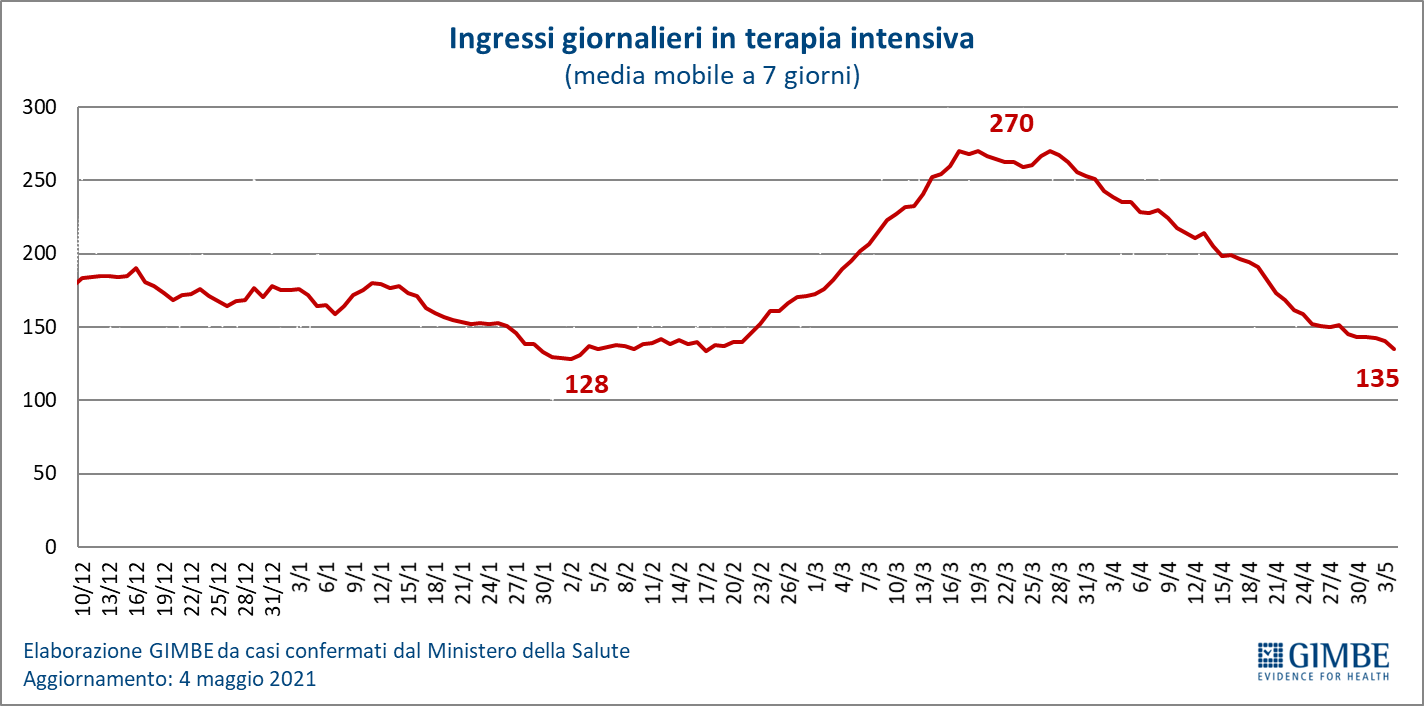
Vaccines: supplies.
As of May 5 (update at 6.11) 24,779,590 doses have been delivered, 32.5% of those scheduled for the 1st half of 2021. In detail:
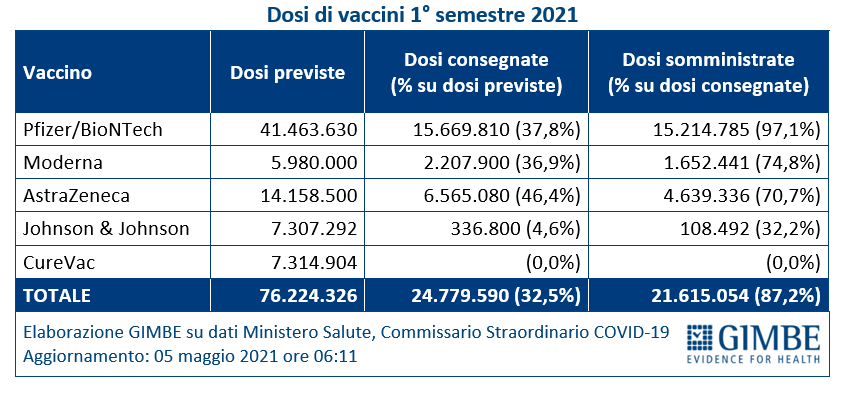
"In terms of deliveries – explains Cartabellotta – the decisive increase in the last week is very encouraging: almost 5 million doses, a decisive stroke of the accelerator to guarantee 3.5 million doses per week" (figure 5).
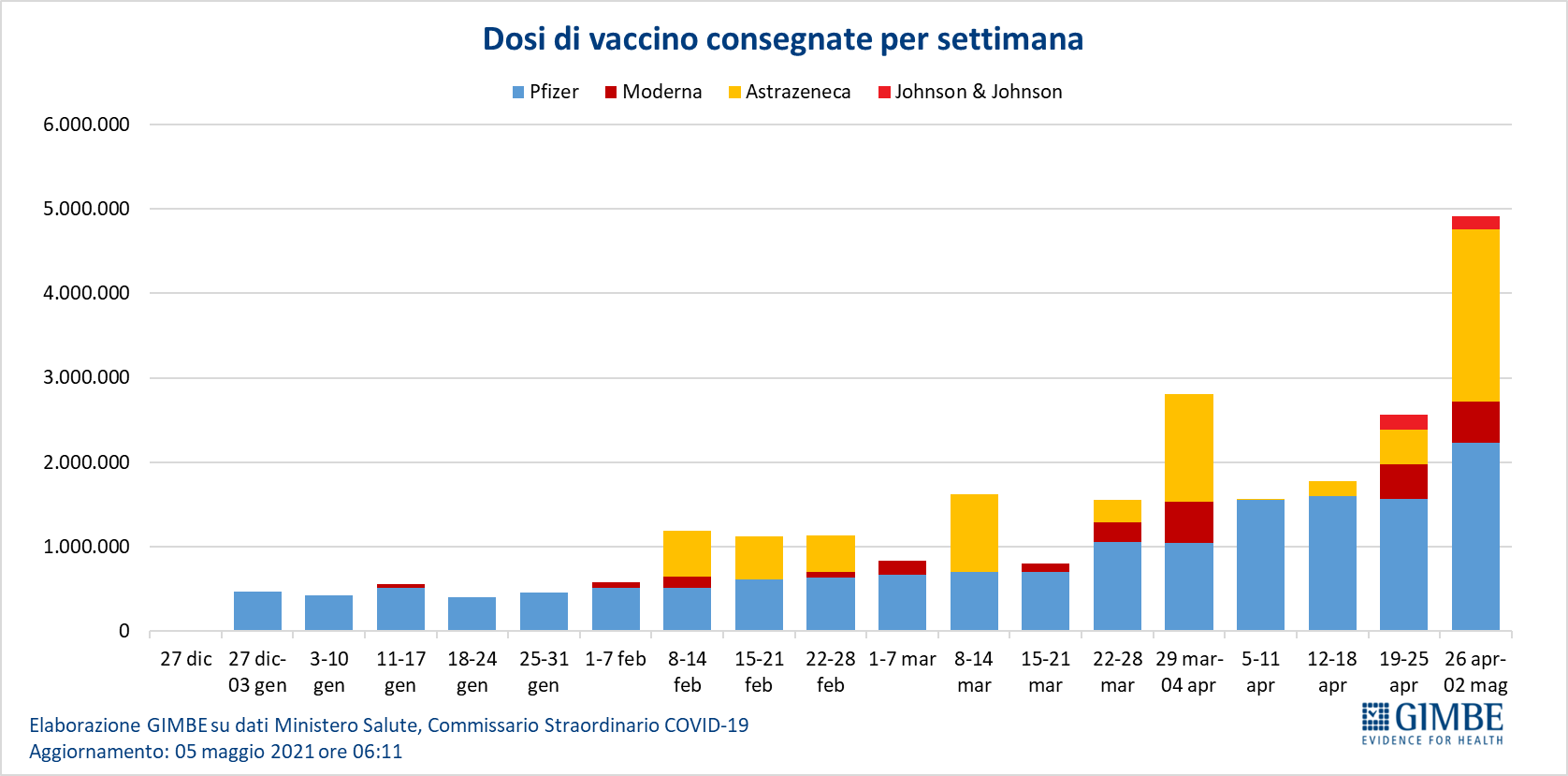
Vaccines: administrations.
As of May 5 (update 6.11), 25.5% of the population has received at least one dose of vaccine (No. 15,200,724) and 10.9% have completed the vaccination cycle (No. 6,522,822), with modest regional differences: from 28.2% of vaccinated people with at least one dose in Liguria to 21.6% in Sicily (figure 6). In the week April 26-May 2, compared to the previous one, there was an increase in administrations of 20% (figure 7) with a 7-day moving average (figure 8) which reaches 432,860 administrations / day (vs 361,326 of April 27) . "The progressive increase in deliveries – comments Gili – together with the available stocks would finally make it possible to keep the 500,000 doses per day constant, an objective reached for now only with the exploit of 29 and 30 April". With regard to the targets set by Commissioner Figliuolo for the week of April 22-29, marked regional differences emerge: 9 Regions exceeded the assigned target, while 12 remained below the threshold (figure 9).
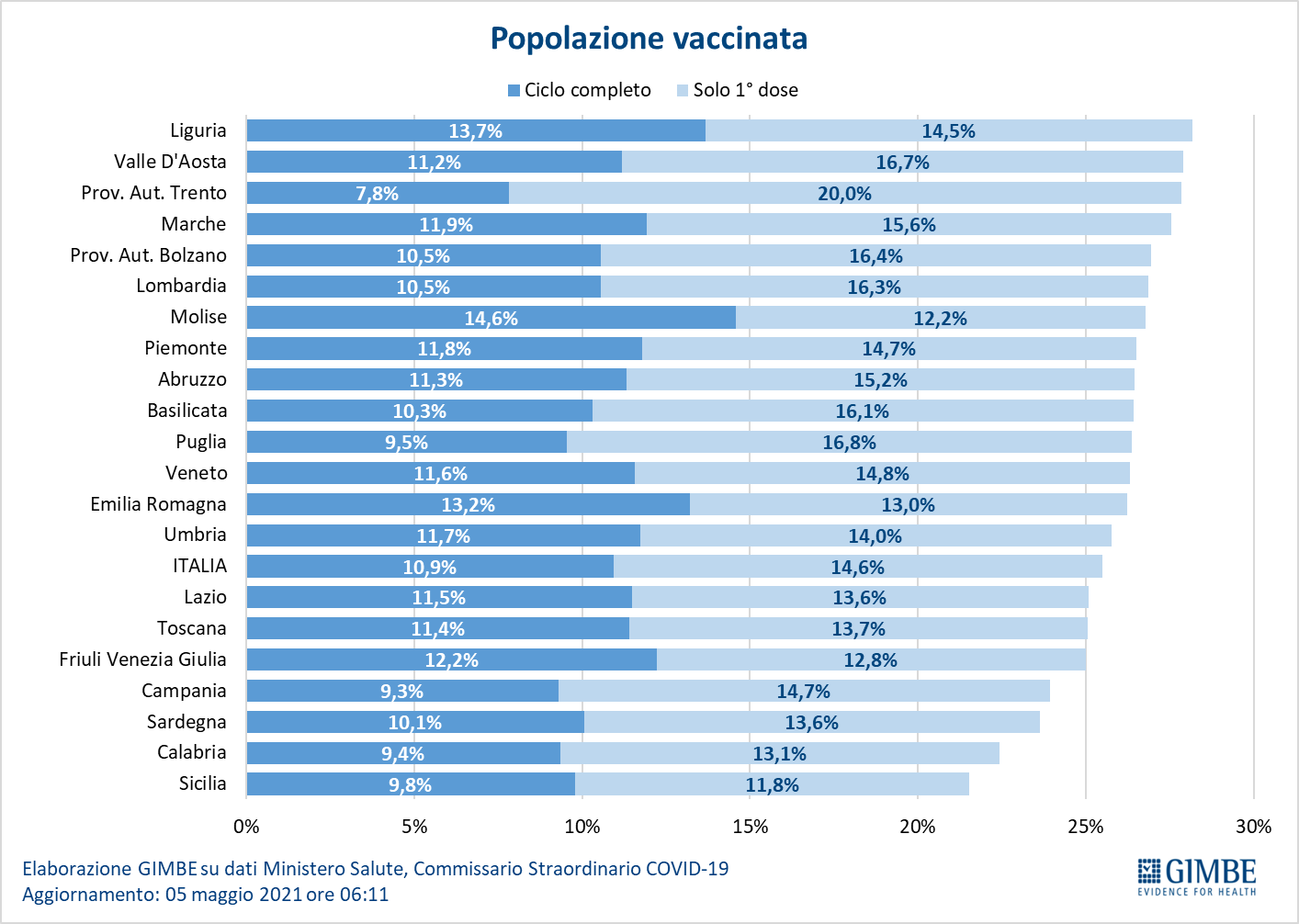
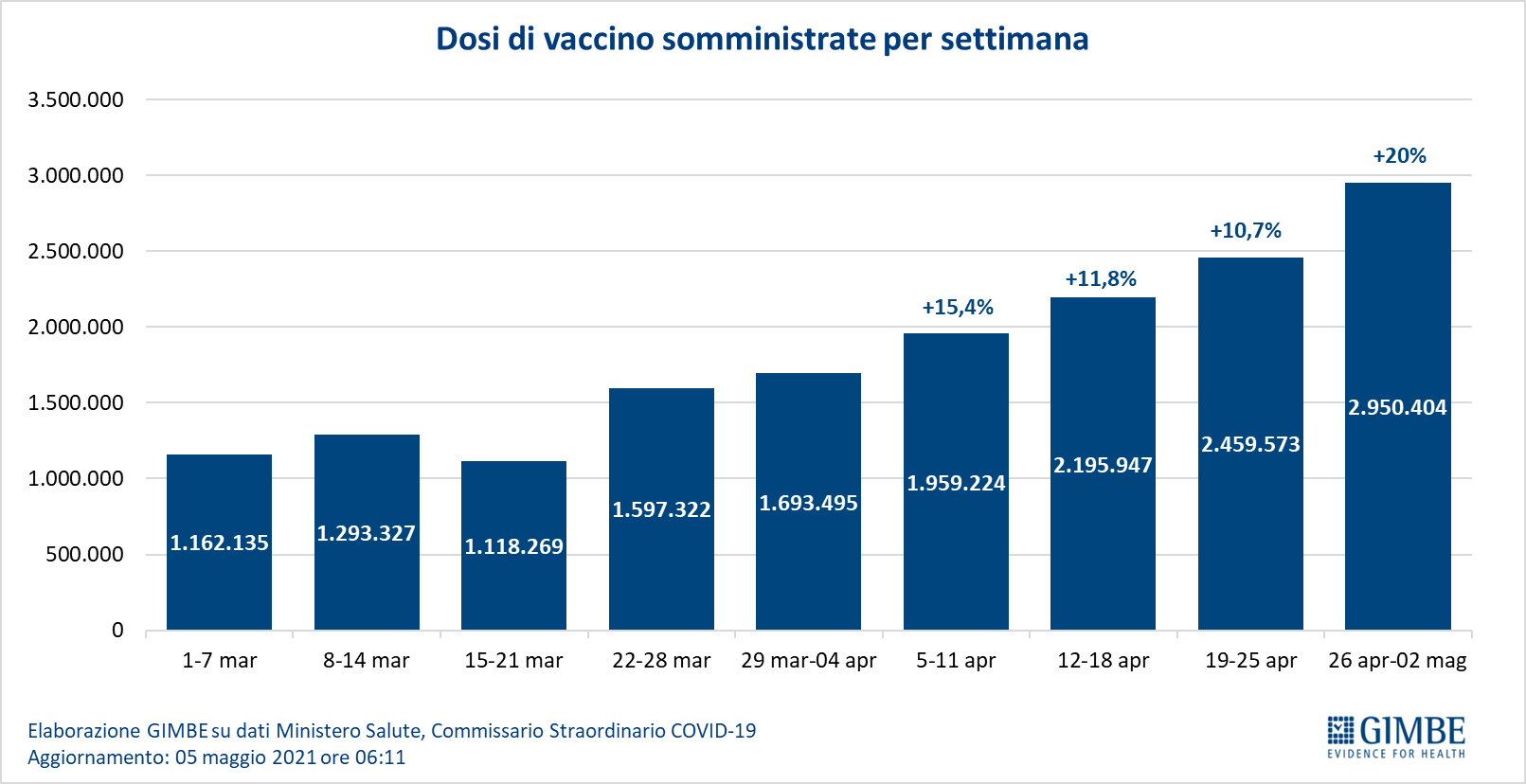
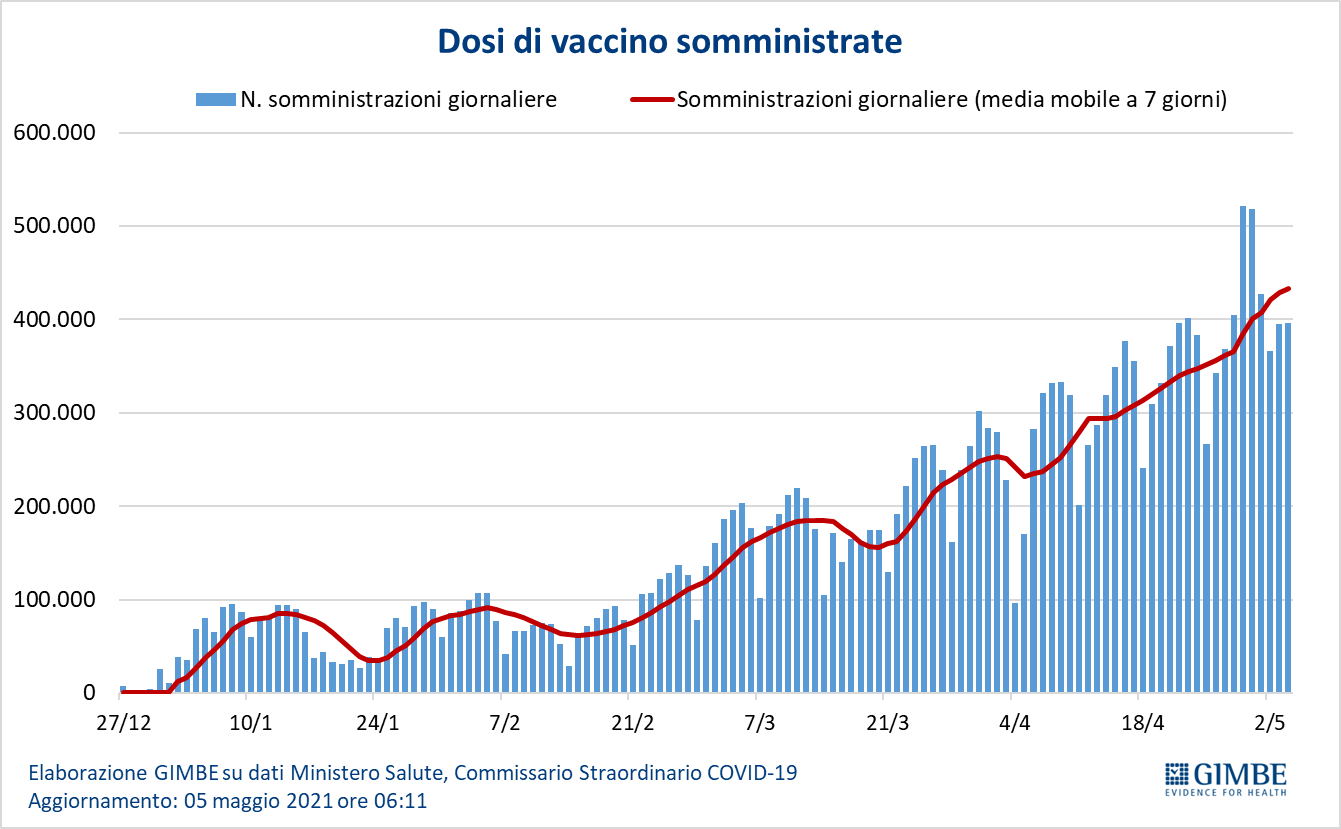
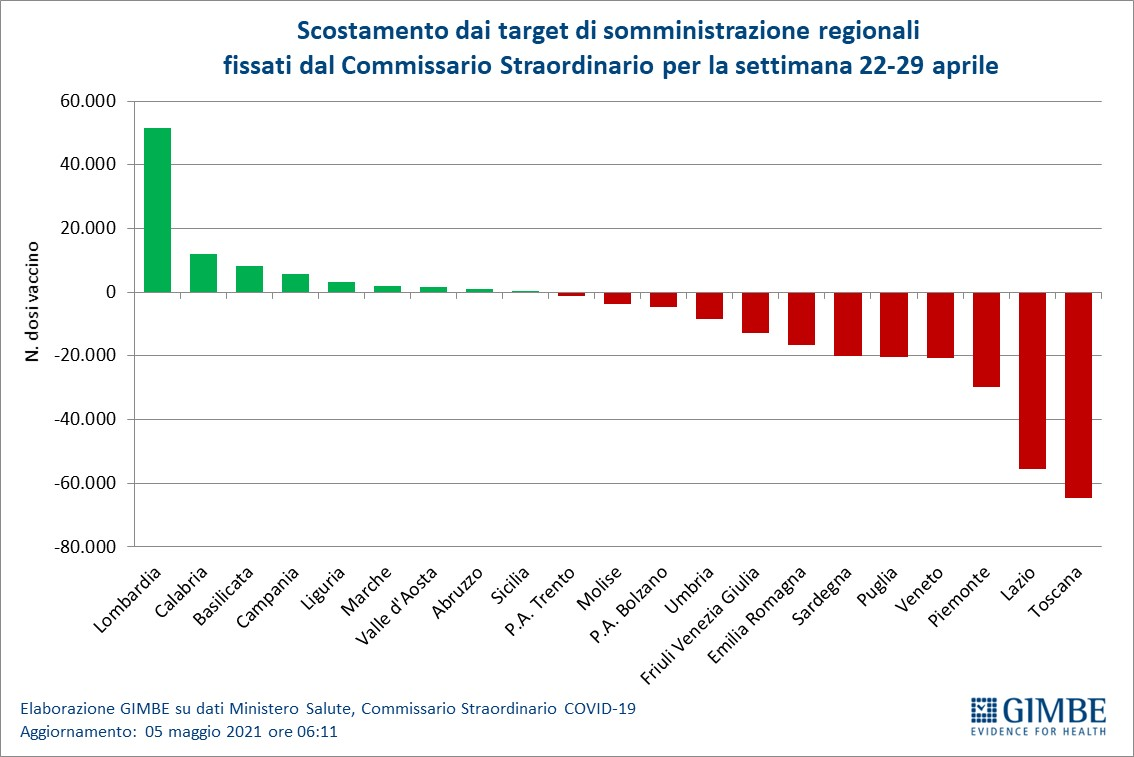
Vaccines: coverage of priority categories.
Over half of the over 60s received at least the first dose of the vaccine, with the autonomous provinces of Trento and Bolzano approaching 70%. If, however, in the over 80 and 70-79 age groups the percentage of vaccinated with at least one dose is now high, the 60-69 age group, which “weighs” heavily on hospital admissions, still lags behind. In detail:
- Over 80: of the over 4.4 million, 3,134,089 (70.9%) completed the vaccination course and 778,130 (17.6%) received the first dose only (Figure 10).
- Age range 70-79: of the over 5.9 million, 725,559 (12.2%) completed the vaccination course and 3,226,312 (54.1%) received the first dose only (Figure 11).
- Age range 60-69: of the over 7.3 million, 680,900 (9.2%) completed the vaccination course and 2,078,360 (28.2%) received the first dose only (Figure 12).
- Fragile subjects and their caregivers: 3,614,254 doses were administered, on which it is impossible to carry out further analyzes, because the total denominator and its regional distribution, nor the division between 1st and 2nd dose, is still unknown for this category.
«In the descending phase of the third wave – concludes Cartabellotta – an increase in cases of school age emerges, undoubtedly also influenced by screening and contact tracing activities. If the increase in new cases in the school population was expected, the political choice to resume activities in the presence was not accompanied by new guidelines to contain the greater contagiousness of the English variant. In any case, in an Italy almost entirely yellow and with insufficient vaccination coverage to stem the circulation of the virus, it is essential to emphasize the importance of individual behavior: distances, masks and open air must be the keywords for the coming months, together with "Rush" to the vaccine as soon as one's turn comes ».
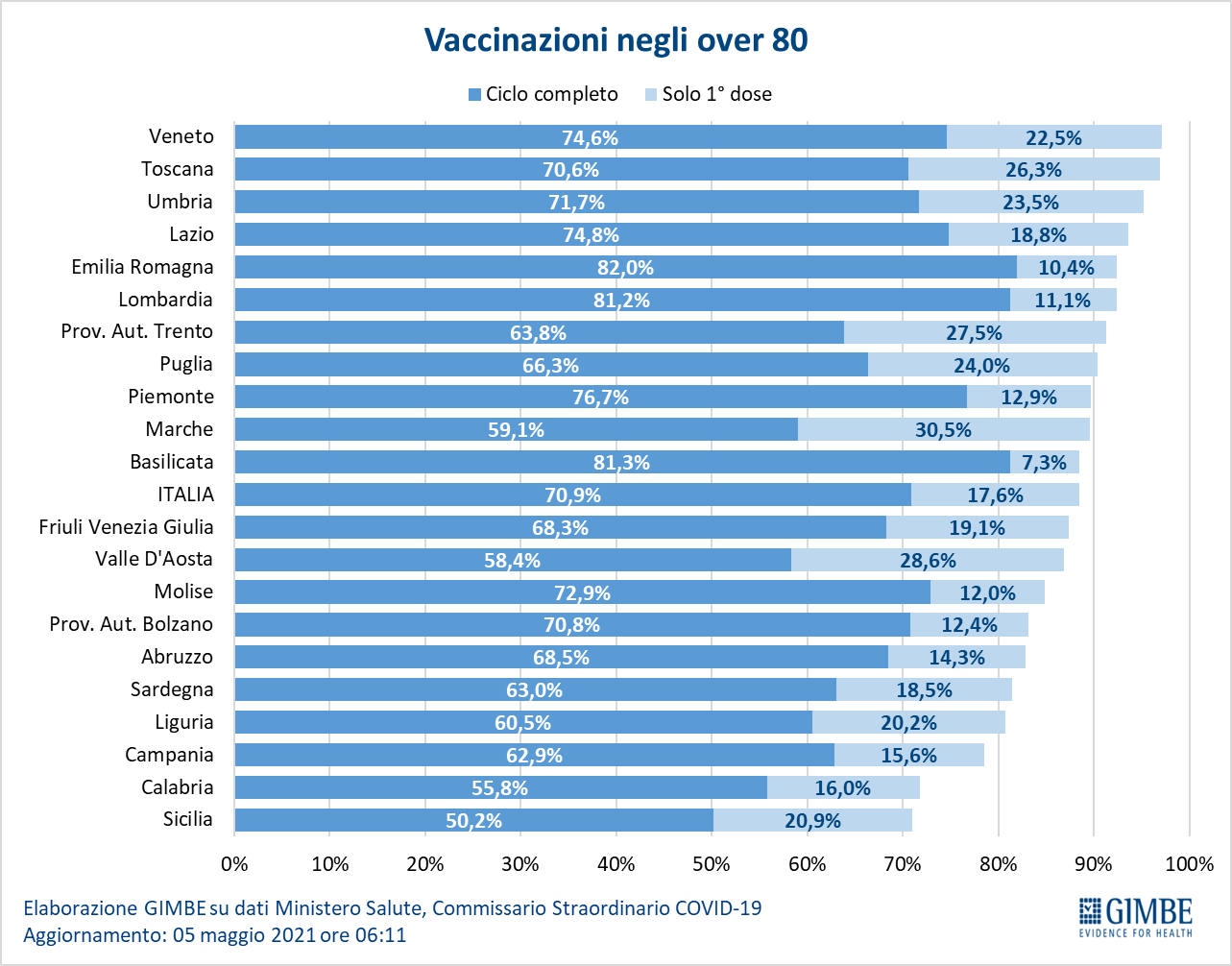
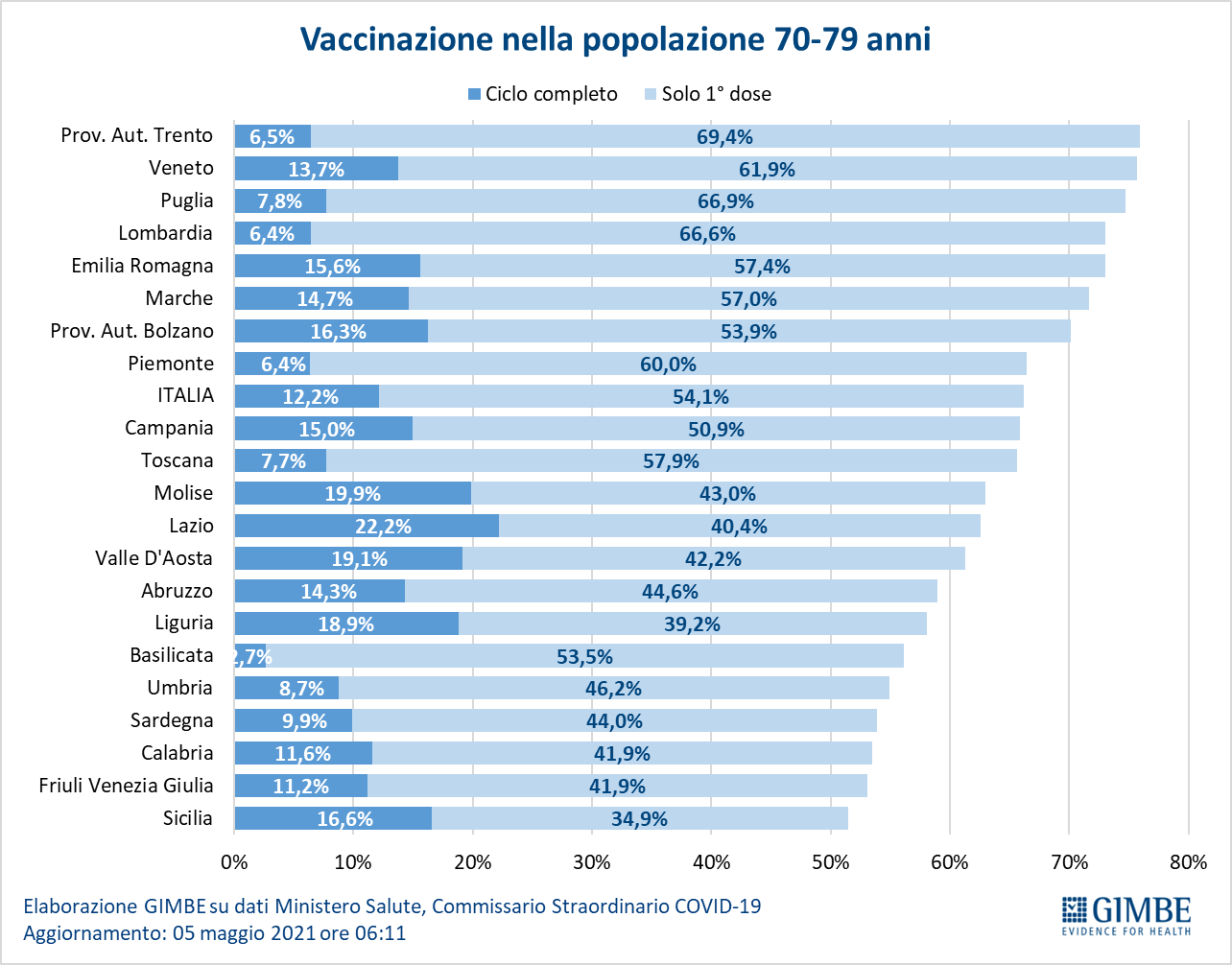
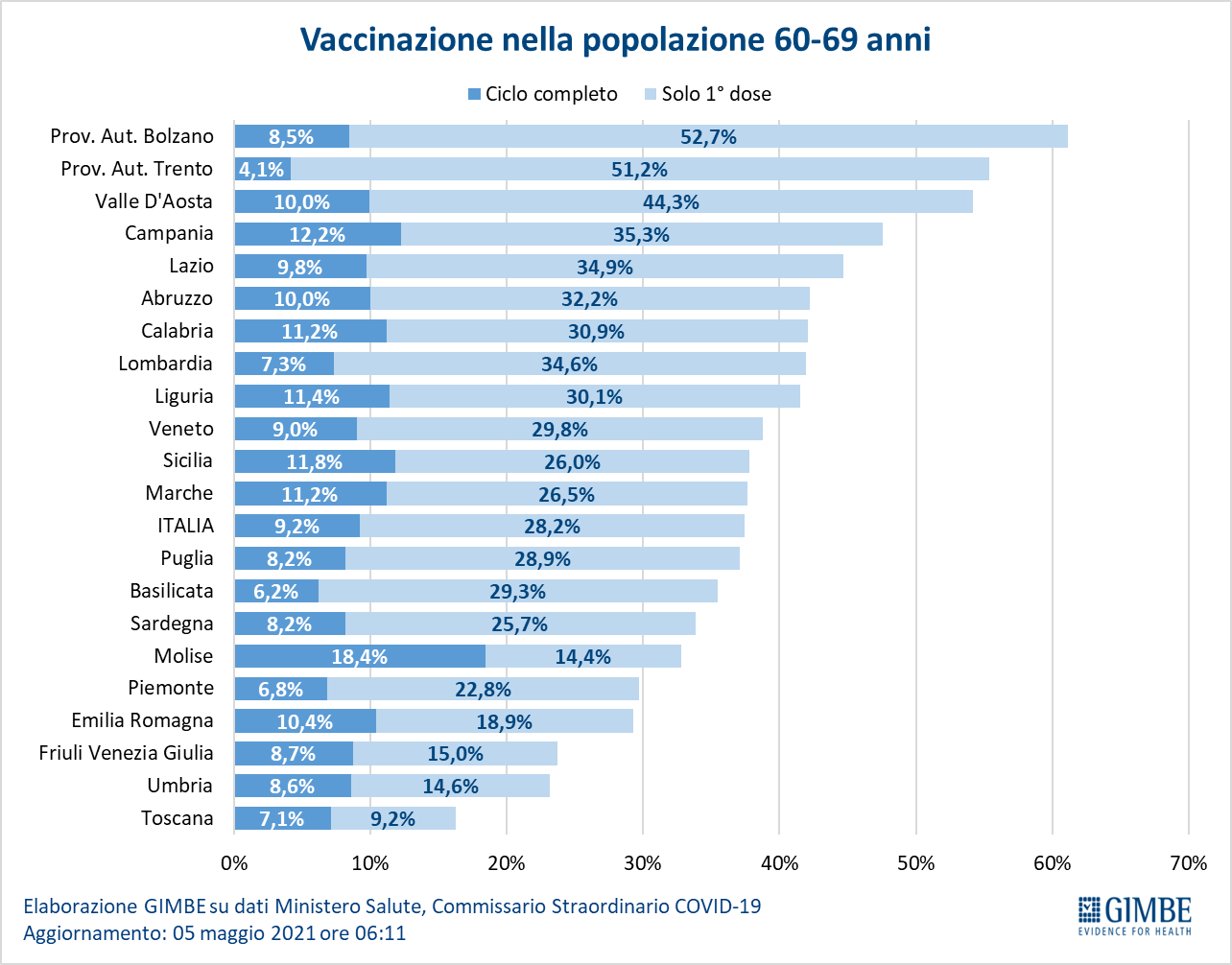
This is a machine translation from Italian language of a post published on Start Magazine at the URL https://www.startmag.it/sanita/tutti-i-ritardi-di-astrazeneca-pfizer-e-non-solo-sui-vaccini-in-italia-report-gimbe/ on Thu, 06 May 2021 08:59:50 +0000.
